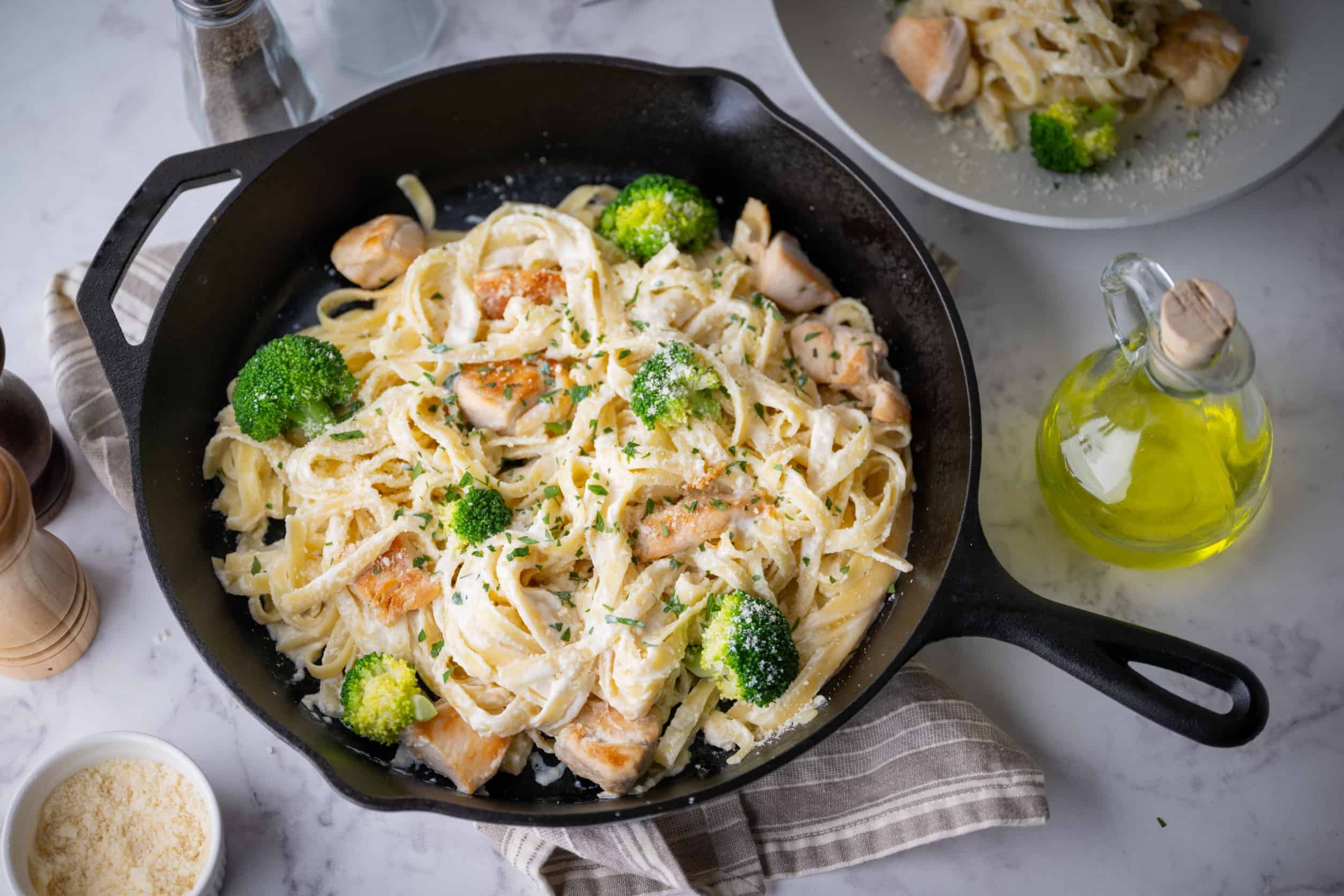If you’ve ever made Alfredo sauce before for a date night or family dinner, you know that it can be quite a finicky dish to perfect. It’s not easy to achieve the right consistency for this rich and creamy sauce, as one misstep could make the ingredients not emulsify properly.
Luckily for many home cooks, there are a few simple tips to make sure that their Alfredo sauce will blend properly and ensure that the dish turns out delicious and perfect.
One of the most important things that you have to keep in mind is the temperature of your ingredients. If your sauce gets too hot or too cold, the fats in the sauce will start to separate from the liquids, which would ultimately result in a broken sauce.
To avoid that from happening, you should use room-temperature ingredients and adjust the ratios of your butter and broth as needed. But in case it still separates, you can try adding some cornstarch to help emulsify your Alfredo sauce.
Whether you’re an experienced cook or just starting to explore your culinary skills, mastering the right way to make Alfredo sauce is an essential skill to have in your repertoire.
Don’t worry if you’ve struggled with it before; this guide will provide you with all the information you need to ensure that your sauce will turn out smooth and creamy all the time.
Tips for Making Perfect Alfredo Sauce

Alfredo sauce is a popular choice for pasta lovers out there because it’s cheesy, creamy, and packed with a lot of flavors. Whether it’s for a romantic date night or just a cozy family dinner, this classic sauce is a must-try. Listed below are some tips to help you make it perfect and delicious.
Use Room Temperature Ingredients
Making sure that your ingredients are at room temperature before cooking will help make your Afredo sauce emulsify seamlessly.
As such, let your butter and heavy cream sit outside the fridge for at least 30 minutes before you start making the sauce.
You can take that time to grate your Parmesan cheese, mince your garlic, and prepare other ingredients like chicken and mushrooms. Doing so would help ensure that everything is ready and within reach when you start cooking the sauce.
Proper Ratio of Butter & Broth
The typical ratio of butter to broth in Alfredo sauce is 1:1. Putting in too much butter will make the sauce too greasy; on the other hand, adding too little broth will result in a thick and pasty sauce.
As such, it’s important to follow the recipe to get the right consistency you need for your dishes.
Cooking the Sauce at the Right Temperature
It’s important to cook the sauce at the right temperature of around 140-160°F (60-71°C), which is generally considered medium-low on most stovetops.
If you allow the pan to get too hot, the sauce can break or curdle, resulting in an unsatisfactory texture.
To prevent that from happening, cook the sauce gently and stir it constantly so it can emulsify properly and prevent it from sticking to the pan.
Adjust the Consistency as Needed
While it is crucial to follow the recipe for your dishes, you should not be hesitant to adjust those amounts to achieve the perfect balance of creaminess and flavor that will suit your preferences.
If your Alfredo sauce is too thick, you can thin it out by adding more broth or water. On the other hand, you can also make the sauce thicker by adding a little cornstarch or more cheese.
Fixing Sauce Separation
Despite your best efforts, sometimes the Alfredo sauce you’re making can still separate. Factors like overcooking the sauce at high heat or using cold ingredients can cause the emulsification to break down, resulting in a sauce that looks curdled or oily.
When this happens, the first thing you should do is remove it from the heat immediately and let the sauce cool down. Afterward, whisk the sauce vigorously and balance your ingredients again as needed to bind everything together.
Final Thoughts
Alfredo sauce is a delicious, classic Italian sauce that goes perfectly with any pasta dish. But for some, it can be quite difficult and tricky to perfect.
Its smooth and creamy goodness can only be achieved with the right ingredients and proper techniques. But if something does go wrong, the tips mentioned in this simple guide will allow you to fix it so you can enjoy your delicious plate of pasta with the people you love.
